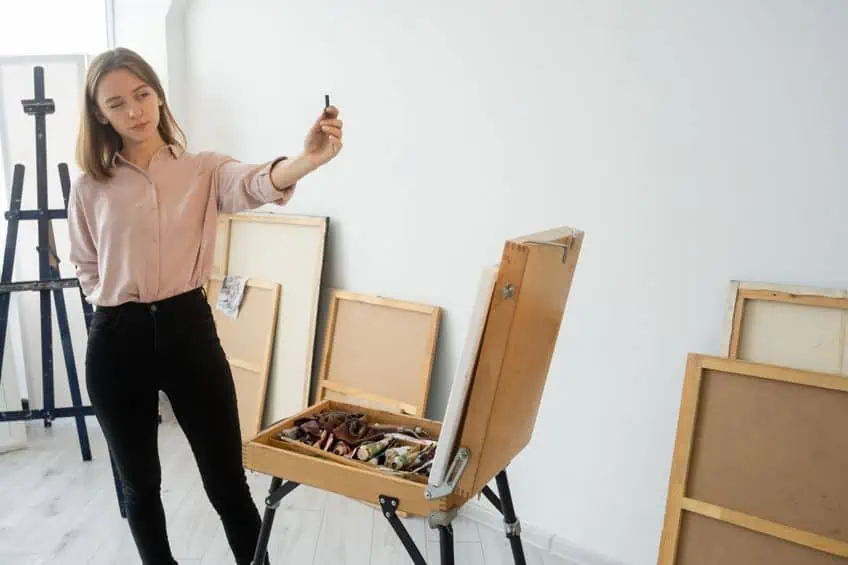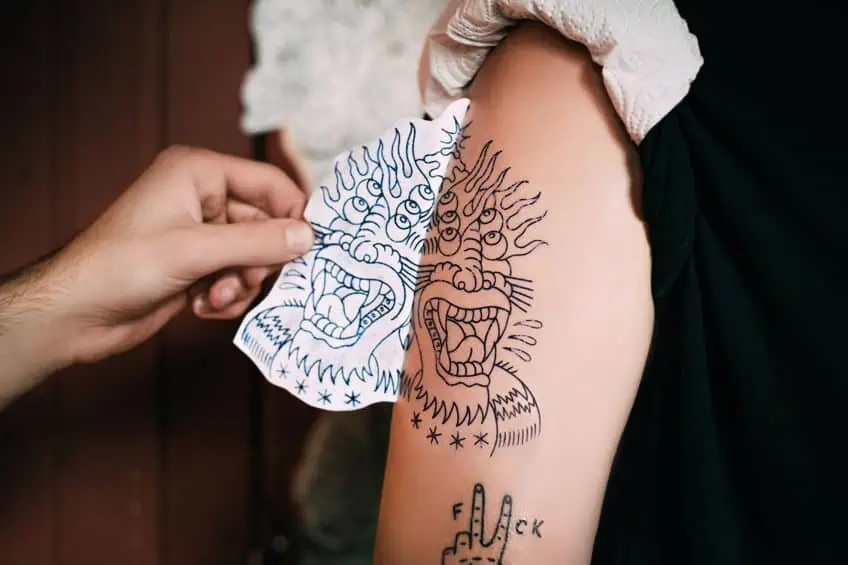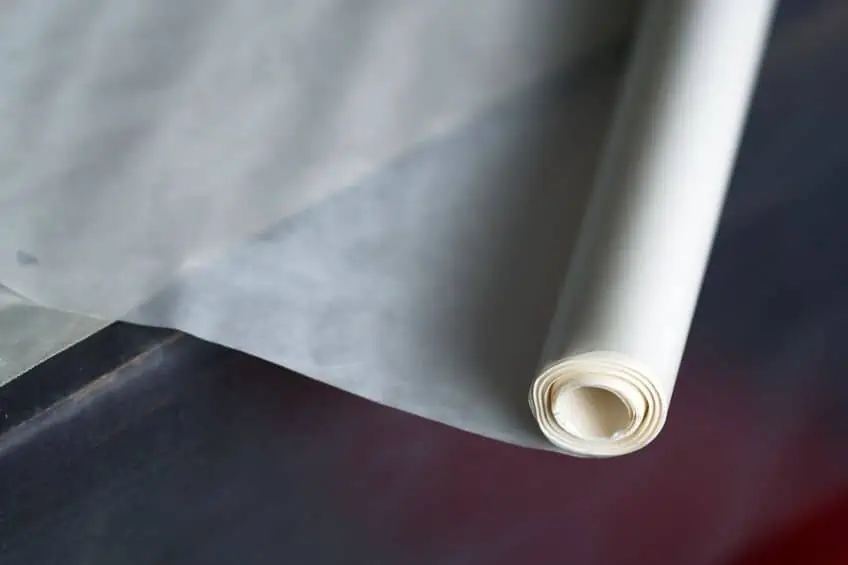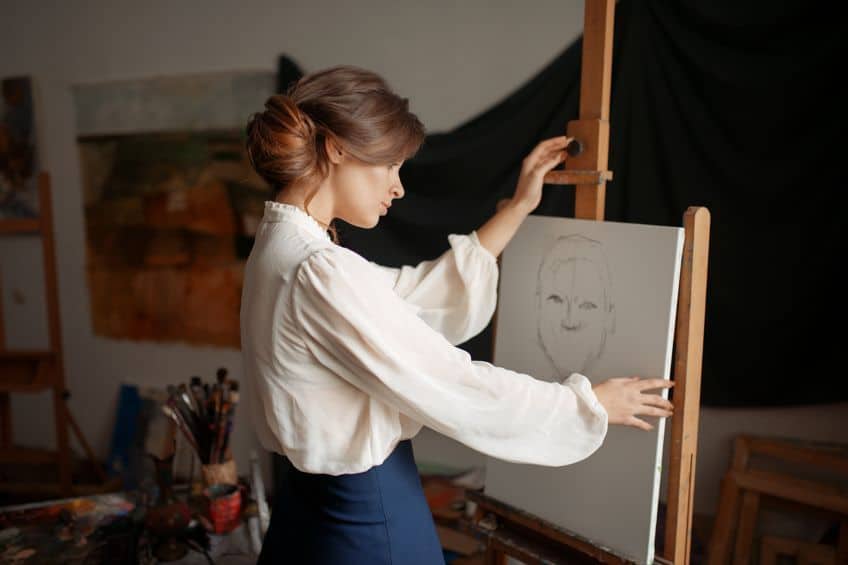Tracing Pictures – An Easy Guide to Tracing Drawings
Tracing offers many benefits to beginners and professional artists alike and there are a multitude of ways to trace depending on if you are tracing to paper, canvas, or other materials. If you want to trace and transfer your reference knowing which method to use can be tricky, we have created this handy guide so you can see which one is right for you.
Why Trace Pictures?
You may remember learning how to write letters and draw simple shapes using tracing in elementary school. Knowing how to trace a picture onto different surfaces is an important skill. It breaks down seemingly complex objects and scenes into simple shapes and makes drawing them much more approachable. Tracing also hones your observational skills and helps you to translate the three-dimensional world onto a two-dimensional page or canvas.
While you can sketch an image from memory or your imagination, if you are trying to copy a reference exactly, such as transferring a sketch to your canvas, then it may end up being more time-consuming. Many believe that tracing in art is cheating, however, as long as you are not trying to pass off tracing of someone else’s work as your own, it is an invaluable tool to develop your artistic skill.
Creating art is about more than just copying a reference.
Understanding color theory, shadows and lighting, composition, and perspectives all play a role in your final piece. If you are just starting out and trying to improve your skills or simply exploring different art styles and techniques, tracing can help you develop a feeling for different shapes and proportions, which can be incorporated into your future pieces.
Methods for Tracing on Paper
In the past, if you wanted to transfer your reference photo or sketch into another page or canvas you had to make use of the grid method. The grid method involves drawing squares of equal size over both your reference and your paper. You then draw the contents of each individual square of your reference into the corresponding square on your page. While it allows you to copy your drawing over and alter its scale, this method is very time-consuming.
Today’s technology has opened new ways to create and enhance your painting, including various tracing methods.
Tracing Paper
The most common and simple way of tracing pictures is using tracing paper. Tracing paper is an extremely thin type of paper that is almost transparent. It enables you to see and trace any images that are placed underneath. Knowing how to trace a picture using tracing paper is a tool you can use throughout your art journey. You use it, place your reference onto a surface and tape it down, then lay the tracing paper on top. You can secure the tracing paper as well or leave it free to allow you to adjust it as you draw. Trace along the lines to transfer the outline of your reference onto the tracing paper. Use a soft pencil and be careful when working with tracing paper as it tears easily.
When you think you are finished, carefully peel off the tape and remove the tracing paper, and have a look at your lines to be sure that you got them all.
There are many methods that you can use to transfer the design from the tracing paper into your paper. One of the easiest is to lay your tracing drawing face down onto your page and draw over the lines with a ballpoint pen or the back of your pencil, which imparts a mirror image impression of your design on your paper.
There are also different methods to use if you prefer not to have a mirrored image. The quickest way to do this is to place your tracing paper with the designs on top of your paper and trace firmly along the outline so that it creates a slight indent on the surface of your page, which can be drawn over. These indents cannot be erased, however, so if you are unsure about the exact outline and shape of your final piece then one of the other methods in this guide might be more useful.
Another method is to use a pencil and heavily shade the underside of your tracing paper in the areas you are looking to trace.
You can then lay the tracing paper onto a page and draw along the outline to transfer it to the page. While your image won’t be mirrored with this method, you may need to clean up any excess pencil markings that may be transferred in the process. You can also trace an image onto glass in a similar way to tracing paper by taking your design and taping it to the underside of the glass. You can then easily use paint or liquid leading to trace the lines onto the top surface of the glass.
Transfer Paper
People often say that tracing creates a “carbon copy” of the reference. This saying originates from using transfer or graphite paper to trace and transfer your designs onto a page or canvas. Transfer paper is a thin paper with graphite on one side. It comes in many colors but the most common are black, white, or gray. To use transfer paper, tape it on top of your page using painter’s tape and then secure your reference on top. Using a ballpoint pen, trace over the lines you want to transfer to your page taking care not to shift the transfer paper or the reference.
When you remove the transfer paper and reference, you will be left with a copy of your image on the page.
One of the downsides of using transfer paper is that you have to remember which lines you have already traced. It can therefore be helpful to use a colored pencil or pen to trace your image so you know which lines you have traced. Using good quality graphite paper is important as there is much less unwanted transfer, however, it can be easily erased from the paper if there is any. Graphite paper can also be reused multiple times until the graphite has been used up, and the paper is relatively cheap. Transfer paper is usually only readily available up to A3 size and it can be tricky to combine multiple pieces of paper, which may make them less suitable for tracing larger pieces.
Charcoal
If you do not have transfer paper another method of transferring your reference onto your paper or canvas is to use charcoal. Charcoal can be used to create your own transfer paper of sorts by rubbing the back of your referencing paper with the charcoal and then placing it on top of your page.
When you trace the lines of your reference the charcoal from the back will be transferred to your page.
This method is messier than just using transfer paper and will need to clean up the smudges, however, a less messy method is to trace the lines on the front of your tracing drawing, then lay it face down on your surface and firmly rub the back of your reference to transfer it that way.
You can also use chalk in the same way for transferring your reference to dark surfaces.
A Bright Window
A sunny window can be great for quickly tracing pictures that are small or simple. Using a window to trace an image is not only very easy but also requires no extra tools or materials, making it cost-effective and great when you are on the go. To use a window to trace your picture, tape your reference and a blank page together to a bright window with your reference image at the bottom.
The sunlight will enable you to see your reference image through your top page and allow you to trace along those lines to transfer the image.
You cannot use a window to trace on dark days or at night and it can get uncomfortable to trace in an upright position for an extended time making it more difficult when tracing bigger or more complex pieces. This method will also not work if the page you are tracing to is too thick or the sunlight is not bright enough as both will make it difficult to see your reference image through your page.
A Lightbox
A more high-tech and reliable version of the window is a lightbox or light pad. As the name suggests, a light box is a box with a transparent top that is lit with diffused lighting from underneath. Use a lightbox just as you would use a window to trace. Simply place your reference image under your paper and turn on the box.
The light should enable you to see the original through your top paper allowing you to trace it.
Unlike with tracing or transfer paper, you are tracing directly onto the page your final piece will be on. This means that you can add any additions such as shading or highlights as you go, although many artists opt to do this afterward when they have a more complete picture, and the light does not make it harder to see.
Today, lightboxes come with different brightness settings for various paper thicknesses and lighting conditions, however, they are expensive and there are many factors to consider before buying them. The main things to consider are the size of the paper that you usually work with as well as the power source that you want to use such as battery-powered or corded.
Bigger lightboxes that can accommodate larger pieces are more expensive and heavier, whereas battery-powered options are more portable.
Wet-Erase Markers
An unusual and fun way to trace a drawing is using wet-erase markers. To trace using wet-erase markers, you will need a sheet protector as well as a spray bottle filled with water. First, slide your reference image into the sheet protector and then use the wet-erase markers to outline it.
Now spray the sheet with a light mist of water and then lay the page you would like to transfer it to on top for 10 to 15 seconds.
Gently peel away the page and you should be left with a mirror image of your reference on your page. While this method is not very practical for most pieces as markers cannot be erased, it can make a great afternoon activity to inspire the kids.
How to Trace a Picture Onto Canvas
While almost all methods can be used to trace a reference picture onto paper, transferring a picture to a canvas is trickier. Canvas is thicker and not as transparent as paper so learning how to trace a picture onto canvas can be trickier. It is also difficult to completely remove pencil marks from a canvas. All these factors mean that you cannot use methods such as the lightbox or carbon paper to trace your reference onto a canvas. We have included some techniques with explanations of how to trace a picture onto a canvas and many of them can also be used to trace onto paper as well.
Graphite Pencil
The graphite pencil method works on the same principle as carbon paper but with a few extra steps. To do this method, use a graphite pencil to shade the underside of your reference image focusing on the lines that you want to trace.
Next, lay your reference on top of your canvas and draw along the lines with a ballpoint pen to transfer them to your canvas.
Using this method allows you to transfer your reference image onto a canvas but with almost no excess transfer that usually comes with using other methods such as graphite paper. This is perfect for canvas as it leaves less to erase or try to hide in your finished piece. The pencil method can also be used to easily trace an image onto other materials such as wood or pottery.
A Projector
A projector is another tool that can help you trace your reference onto your canvas. Using a projector, you can cast a picture of your reference directly onto your canvas and trace the lines. While good quality models can be pricey, projectors are great for tracing larger pieces or when working vertically, and also have the added benefit of allowing you to easily scale your reference for different canvas sizes.
LED projectors have the best image quality so are ideal for tracing pictures onto canvas and many even connect directly to your computer or laptop. This makes them portable and allows you to project them onto any surface, which is great for wall murals.
Working with projectors can take some practice as you have to ensure your shadow does not obscure the image.
How to Trace a Picture From Your Phone
Technology has given us new ways to trace reference images to both paper and canvas. Using your phone or a tablet, you can invert, zoom in, or crop your reference to improve or scale it. Your device is like a projector and light box in one. Open your reference image on your phone and lay tracing paper over it. The light from your phone should allow you to see the lines of your reference image and you can use a pencil to gently trace them.
Be careful not to touch the screen as you may shift the image.
There is a multitude of apps available for your device that can help you trace an image. A flashlight app can be used to turn the screen of your phone or tablet into a lightbox. They turn your screen a bright white that your reference image and tracing paper can be placed on and traced. Use a ballpoint pen or soft pencil when tracing lines on your screen so that you do not scratch or damage it.
There are also apps that use your camera lens to project your reference image onto your page or canvas virtually. This allows you to see your surface normally while the app also applies your reference image as a filter on your phone screen. You can then follow these lines in reality while viewing it on the app virtually.
These apps also come with a variety of cool drawings to trace over if you are looking for some inspiration or practice.
Tips for Tracing Pictures
With your chosen method, you should be able to trace any image onto your page or canvas. Here are some helpful tips that you can use to make the process easier or improve the final piece.
- Always tape your reference and tracing or transfer paper to your work surface or with removable tapes such as washi tape or painter’s tape. This prevents them from shifting while you are tracing. Occasionally look at your tracing away from the light from a light box or window to make sure you have not missed any lines.
- Use a kneaded eraser to remove excess lines or blot darker lines so they do not show through your paint or colored pencils, especially when working with light colors. Be sure to use a clean eraser to minimize smudges and clean it often on a scrap of paper or rough cloth. Go lightly with your pencil when tracing as these lines are easier to erase and less likely to leave a mark. If you are painting with oil paints, you will need to spray any graphite lines with a fixative to prevent them from bleeding through.
- If you prefer not to trace directly onto your reference image, you can instead use a photocopy or lay a piece of baking paper or tracing paper over it. Easy-trace drawings are high-quality images with clear lines that make them the best to use when tracing. Remember to only trace the lines you are going to need to outline your piece as details, shading, and color can be added later. Rather focus on the placement and dimension of the elements in your reference.
Cool Things to Trace
Armed with your knowledge of tracing methods, you may be looking for some fun things to trace. Tracing leaves or flowers can improve your understanding of perspective and how different simple shapes come together to produce a complex image. Human anatomy diagrams are not only cool drawings to trace over but also a tool to recognize proportions or the composition of pieces.
Geometric designs and mandalas are easy trace drawings with simple shapes that are impactful and aesthetically pleasing. Many people learn how to create these complex shapes through tracing. The beauty of tracing is that it allows you to experiment with different art styles and subjects, which can not only inspire you but improve your technical skills as well.
Tracing can benefit your art in many ways for both professionals and beginners. Whether you are trying something new or simply transferring a sketch to a canvas there are many ways to trace an image. We hope you have gained some insight into which method works best for you.
Frequently Ask Questions
How Do I Trace My Artwork?
There is a multitude of ways to trace depending on the medium you use and the material you are tracing on, however, the easiest and most versatile way is to use tracing paper. Simply place the tracing paper over your reference image and use a pencil to trace along the lines. You can then transfer the outline of your design from the tracing paper to your material by either flipping it over and drawing over the lines with a ballpoint pen or laying it on top of carbon paper on your canvas or page and going over the traced lines again.
How to Trace a Picture From Your Phone?
There are many ways to trace an image from your phone. The simplest way is to place a page over your phone so that the light from the screen allows you to see the lines of your image underneath. You can carefully trace along these lines taking care not to scratch or damage your screen. There is also a multitude of tracing apps available that you can download to your phone, or you could simply print out the image and use any other tracing method to transfer it to your canvas.
Is Tracing Cheating in Art?
Using tracing in art is only considered cheating if you try to sell off the work as your own. Tracing is a valuable tool for beginners and professionals, especially when studying new subjects as you can understand the small parts that come together to make them, and their proportions, and hone your observational skills for future projects.
Megan is a writer and researcher who holds a degree in Social Sciences, with a specialization in Psychology and Environmental Science, from the University of Cape Town. Her dedication to acquiring knowledge and making a positive impact has driven her current work in promoting conscious and sustainable growth in Southern Africa. Megan’s interests encompass exploring the physical and psychological impacts of color in our environment on our mood and well-being. She is also passionate about the role of art and creativity, which has been an integral part of society since the beginning of human history. Since 2022, Megan has been contributing blog posts on painting and color theory at artfilemagazine.
Learn more about Megan van Schoor and about us.
Cite this Article
Megan, van Schoor, “Tracing Pictures – An Easy Guide to Tracing Drawings.” artfilemagazine – Your Online Art Source. January 11, 2023. URL: https://artfilemagazine.com/tracing-pictures/
van Schoor, M. (2023, 11 January). Tracing Pictures – An Easy Guide to Tracing Drawings. artfilemagazine – Your Online Art Source. https://artfilemagazine.com/tracing-pictures/
van Schoor, Megan. “Tracing Pictures – An Easy Guide to Tracing Drawings.” artfilemagazine – Your Online Art Source, January 11, 2023. https://artfilemagazine.com/tracing-pictures/.













